Price reductions at Crocus
by Sarah - September 13th, 2009.Filed under: Crocus, Price Reductions.
Reduced price on items today at Crocus
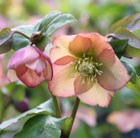
hellebore was £13.99 now £9.99
Position: partial shadeSoil: heavy, neutral to alkaline soilRate of growth: average Flowering period: February to April Flower colour: apricotOther features: all parts of the plant cause severe discomfort if ingested; the sap may cause skin irritationHardiness: fully hardy (borderline)Pretty, pendent or outward-facing, saucer-shaped, apricot flowers from February to April and leathery, deep green leaves. This is an attractive variety which is perfect as a ground cover for areas of dappled shade under deciduous trees and shrubs. Like all hellebores, they prefer a heavy, neutral to alkaline soil.Garden care: Add lots of well-rotted leaf mould or organic matter to the planting hole. Apply a generous 5-7cm (2-3in) mulch of well-rotted organic matter around the base of the plant in autumn and provide a top-dressing of general fertiliser each spring.
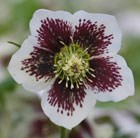
hellebore was £13.99 now £9.99
Position: partial shadeSoil: heavy, neutral to alkaline soilRate of growth: average Flowering period: February to April Flower colour: white with red specklesOther features: all parts of the plant cause severe discomfort if ingested; the sap may cause skin irritationHardiness: fully hardyPretty, pendent or outward-facing, saucer-shaped, white with red speckles flowers from February to April and leathery, deep green leaves. This is an attractive variety which is perfect as a ground cover for areas of dappled shade under deciduous trees and shrubs. Like all hellebores they prefer a heavy, neutral to alkaline soil.A top tip from the Crocus crew is to cut back the old leaves down to the ground in January or February. This will show off the new emerging flowers to best effect and it also helps to get rid of foliar diseases such as Hellebore leaf spot.Garden care: Add lots of well-rotted leaf mould or organic matter to the planting hole. Apply a generous 5-7cm (2-3in) mulch of well-rotted organic matter around the base of the plant in autumn and provide a top-dressing of general fertiliser each spring.
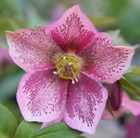
hellebore was £13.99 now £9.99
Position: partial shadeSoil: heavy, neutral to alkaline soilRate of growth: average Flowering period: February to April Flower colour: pink with red specklesOther features: all parts of the plant cause severe discomfort if ingested; the sap may cause skin irritationHardiness: fully hardy (borderline)Pretty, pendent or outward-facing, saucer-shaped, pink with red speckles flowers from February to April and leathery, deep green leaves. This is an attractive variety which is perfect as a ground cover for areas of dappled shade under deciduous trees and shrubs. Like all hellebores, they prefer a heavy, neutral to alkaline soil.A top tip from the Crocus crew is to cut back the old leaves down to the ground in January or February. This will show off the new emerging flowers to best effect and it also helps to get rid of foliar diseases such as Hellebore leaf spot.Garden care: Add lots of well-rotted leaf mould or organic matter to the planting hole. Apply a generous 5-7cm (2-3in) mulch of well-rotted organic matter around the base of the plant in autumn and provide a top-dressing of general fertiliser each spring.
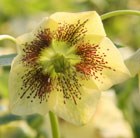
hellebore was £13.99 now £9.99
Position: partial shadeSoil: heavy, neutral to alkaline soilRate of growth: average Flowering period: February to April Flower colour: yellow with red specklesOther features: all parts of the plant cause severe discomfort if ingested; the sap may cause skin irritationHardiness: fully hardy (borderline)Pretty, pendent or outward-facing, saucer-shaped, yellow with red speckles flowers from February to April and leathery, deep green leaves. This is an attractive variety which is perfect as a ground cover for areas of dappled shade under deciduous trees and shrubs. Like all hellebores, they prefer a heavy, neutral to alkaline soil.Garden care: Add lots of well-rotted leaf mould or organic matter to the planting hole. Apply a generous 5-7cm (2-3in) mulch of well-rotted organic matter around the base of the plant in autumn and provide a top-dressing of general fertiliser each spring.
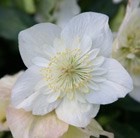
Christmas rose was £13.99 now £9.99
Position: partial shadeSoil: heavy, neutral to alkaline soilRate of growth: average Flowering period: February to April Flower colour: whiteOther features: all parts of the plant cause severe discomfort if ingested; the sap may cause skin irritationHardiness: fully hardyGorgeous, double white, bowl-shaped flowers from February to April and clumps of leathery, dark green leaves. This pretty Christmas rose looks great planted in bold groups towards the front of a partially shady mixed border. Although it prefers a heavy, neutral to alkaline soil, once established it will tolerate drier conditions.Garden care: Add lots of well-rotted leaf mould or organic matter to the planting hole. Apply a generous 5-7cm (2-3in) mulch of well-rotted organic matter around the base of the plant in autumn and provide a top-dressing of general fertiliser each spring.
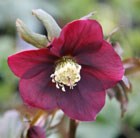
hellebore was £13.99 now £9.99
Position: partial shadeSoil: heavy, neutral to alkaline soilRate of growth: average Flowering period: February to AprilHardiness: fully hardy (borderline) Nodding or outward-facing, saucer-shaped, flowers open in February in varying shades from deep pink to clear red. The flowers last for up to 3 months and the handsome evergreen foliage is leathery, deeply cut and dark green. One of the earliest flowering plants, lenten roses have most impact planted in groups at the front of a partially shady mixed border where they can be seen through windows in winter. Or try them as ground cover beneath deciduous shrubs or among spring-flowering bulbs. In former times, hellebores were planted close to cottage doors to prevent evil spirits from crossing the threshold.Garden care: A top tip from the Crocus crew is to cut back the old leaves to the ground in January or February. This will show off the emerging flowers to best effect and it also helps to get rid of foliar diseases such as hellebore leaf spot. When planting, add lots of well-rotted leaf mould or organic matter to the planting hole. Apply a generous 5-7cm (2-3in) mulch of well-rotted organic matter around the base of the plant in autumn and provide a top-dressing of general fertiliser each spring.
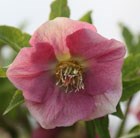
hellebore was £13.99 now £9.99
Position: partial shadeSoil: heavy, neutral to alkaline soilRate of growth: average Flowering period: February to April Flower colour: white or creamish-whiteOther features: all parts of the plant cause severe discomfort if ingested; the sap may cause skin irritationHardiness: fully hardy (borderline)Pretty, pendent or outward-facing, saucer-shaped, pink flowers from February to April and leathery, deep green leaves. This is an attractive variety which is perfect as a ground cover for areas of dappled shade under deciduous trees and shrubs. Like all hellebores, they prefer a heavy, neutral to alkaline soil.A top tip from the Crocus crew is to cut back the old leaves down to the ground in January or February. This will show off the new emerging flowers to best effect and it also helps to get rid of foliar diseases such as Hellebore leaf spot.Garden care: Add lots of well-rotted leaf mould or organic matter to the planting hole. Apply a generous 5-7cm (2-3in) mulch of well-rotted organic matter around the base of the plant in autumn and provide a top-dressing of general fertiliser each spring.
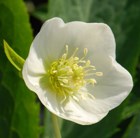
hellebore was £13.99 now £9.99
Position: partial shadeSoil: heavy, neutral to alkaline soilRate of growth: average Flowering period: February to April Flower colour: whiteOther features: all parts of the plant cause severe discomfort if ingested; the sap may cause skin irritationHardiness: fully hardy (borderline)Pretty, pendent or outward-facing, saucer-shaped, white flowers from February to April and leathery, deep green leaves. This is an attractive variety which is perfect as a ground cover for areas of dappled shade under deciduous trees and shrubs. Like all hellebores, they prefer a heavy, neutral to alkaline soil.Garden care: Add lots of well-rotted leaf mould or organic matter to the planting hole. Apply a generous 5-7cm (2-3in) mulch of well-rotted organic matter around the base of the plant in autumn and provide a top-dressing of general fertiliser each spring.
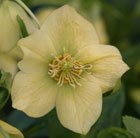
hellebore was £13.99 now £9.99
Position: partial shadeSoil: heavy, neutral to alkaline soilRate of growth: average Flowering period: February to April Flower colour: yellowOther features: all parts of the plant cause severe discomfort if ingested; the sap may cause skin irritationHardiness: fully hardy (borderline)Pretty, pendent or outward-facing, saucer-shaped, yellow flowers from February to April and leathery, deep green leaves. This is an attractive variety which is perfect as a ground cover for areas of dappled shade under deciduous trees and shrubs. Like all hellebores, they prefer a heavy, neutral to alkaline soil.A top tip from the Crocus crew is to cut back the old leaves down to the ground in January or February. This will show off the new emerging flowers to best effect and it also helps to get rid of foliar diseases such as Hellebore leaf spot.Garden care: Add lots of well-rotted leaf mould or organic matter to the planting hole. Apply a generous 5-7cm (2-3in) mulch of well-rotted organic matter around the base of the plant in autumn and provide a top-dressing of general fertiliser each spring.
hellebore was £15.99 now £10.99
hellebore was £15.99 now £10.99
hellebore was £15.99 now £10.99
hellebore was £15.99 now £10.99
hellebore was £15.99 now £10.99
victorian-style-glass-bell-jar was £25.99 now £19.99
salad-planting-bag-with-natural-willow-surround was £25.99 now £19.99
potato-planting-bag-with-natural-willow-surround was £24.99 now £19.99
victorian-style-glass-bell-jar was £32.99 now £29.99






